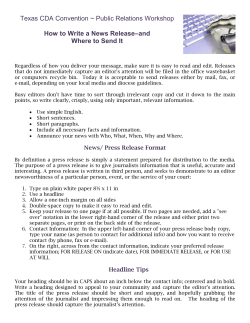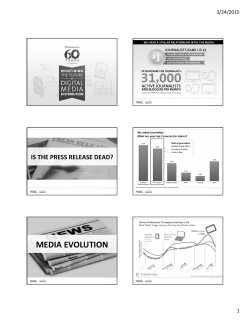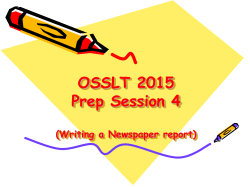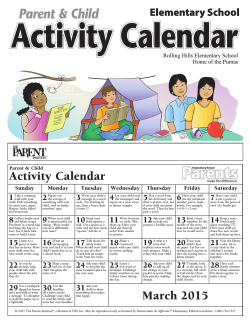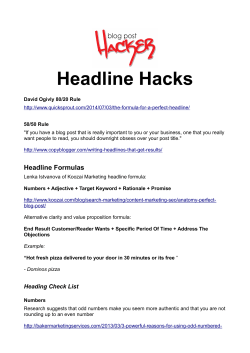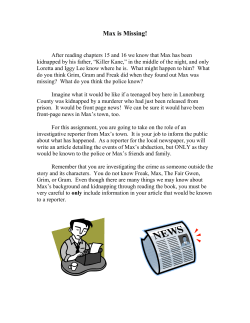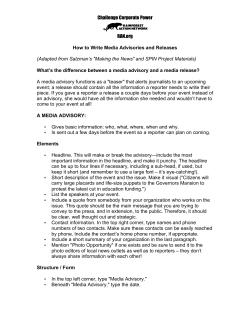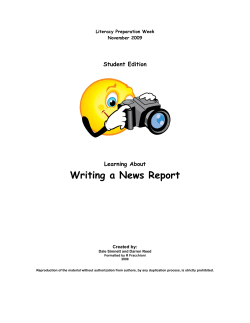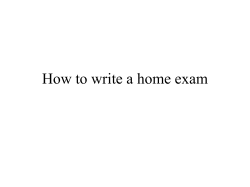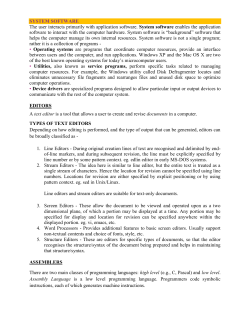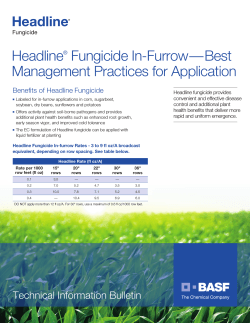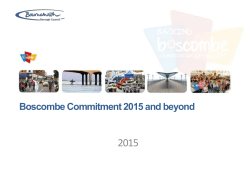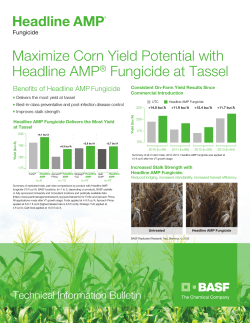
S i m p
Simple Guide to writing an Eye-Catching press release Getting Started Self-promotion plays a big part in the success of any business. Publicity generated by press releases is free, and often the coverage is far more extensive than anything you could have hoped for with an ad, which could be quite costly. So how to write an eye-catching press release which will grab the attention of a busy editor or journalist? The key to writing a good press release is to keep it short, to the point, relevant and well structured. The perfect press release would not only be related to the recipient's business area, but should also be newsworthy. And remember, your goal is to attract favourable media attention while following these steps. A press release is simply a written statement to the media. They can announce a range of news items: scheduled events, personnel promotions, awards, new products and services, sales accomplishments, etc. They can also be used in generating a feature story. Reporters are more likely to consider a story idea if they first receive a release. It is a fundamental tool of PR work, one that anyone who's willing to use the proper format can use. Consider the following when constructing your press release: Communicate the 5 Ws and the H. Who, what, when, where, why, and how. Then consider the points below if pertinent. What is the actual news? Why this is news. The people, products, items, dates and other things related with the news. The purpose behind the news. Your company - the source of this news. Now from the points gathered, try to construct paragraphs and assemble them sequentially: The headline > the summary or introduction of the news > event or achievements > product > people > again the concluding summary > the company. The more newsworthy you make the press release copy, the better the chances of it being selected by a journalist for reporting. Find out what "newsworthy" means to a given market and use it to hook the editor or reporter. Top Ten Tips 1. Is it Newsworthy? Most journalists are interested in writing interesting news pieces and features for their target audience. They are not particularly interested in finding out how your company works or who the MD is - they simply want interesting, factbased news. Bear this in mind when penning your press releases and try to be objective in the balance between providing an interesting story and providing background to your new product or service. A good example would be to commission a survey related to your new offering and make the findings the subject of the release. Craft each press release to target a specific media outlet and send it to the specific reporter who covers that area. You can usually find this information (and contact details) on the outlet's website. Sending the same press release to multiple reporters at the same outlet can be seen as a sign that you are is a sign that you are taking shortcuts rather than targeting a specific market. 2. Create a Good Headline Believe me, unless your press release has an eye-catching subject line, it is likely to end up in the trash folder very rapidly. Most editors will not even open a release which doesn't relate to their area of business, especially if the subject doesn't hold their attention for at least two seconds. The lead, or first sentence, should grab the reader and say concisely what is happening. The next 1-2 sentences then expand upon the lead. The headline should be brief, clear and to the point: an ultra-compact version of the press release’s key point. Use your headline as the subject line of the e-mail. If you've written a good eye-caching headline, this will help your message stand out in the editor's e-mail inbox. The press release should be written as you want it to appear in a news story. 3. First Paragraph is crucial Try to insert a very short, punchy first paragraph summarising the aims of the press release - this can be either before or after the key points. Your press release should start off strong, followed by the detail. You may decide just to write a strong opening paragraph and not to use bullet points - that's entirely up to you of course. A first paragraph (two to three sentences) must actually sum up the press release and the further content must elaborate it. In a fast-paced world, neither journalists nor other readers would read the entire press release if the start of the article didn't generate interest. The press release body copy should be compact. Avoid using very long sentences and paragraphs. Avoid repetition and over use of fancy language and jargon. Deal with actual facts - events, products, services, people, targets, goals, plans, projects. Try to provide maximum use of concrete facts. Signal the end of the press release with three # symbols, centered directly underneath the last line of the release. This is a journalistic standard. 4. Give some Quotes Rather than expecting editors or journalists to call your company for quotes related to your press release. Do the leg work for them and include several quotes from suitably important people in your company. 5. Keep it Short and Sweet A press release should be several paragraphs long, and certainly no longer than 500 words in total. Remember, you are trying to provide a snapshot rather than an essay. Interested journalists/editors will contact you if they want to find out more. Include information about the company. When a journalist picks up your press release for a story, he/she would logically have to mention the company in the news article. Journalists can then get the company information from this section. If you can make life easier for editors and reporters, you're more likely to get coverage. If you write a press release that's close to the way the editor will actually publish it, it may see publication with minimal editing. Keep it accurate and factual so minimum editing will be needed. Avoid jargon or specialized technical terms. If accuracy requires the use of an industry-specific term, define it. 6. Relevancy Just as job hunters may write several CV's in order to maximise their chances of securing roles at various companies, you should take time to tailor the press release to each recipient's area of interest. 7. Style & Formatting Make sure you write your release in the third person... spell check several times and ask colleagues to proof read before pressing the "send" button. Clearly mark the publication as a "Press Release", and write "End of Release" following the content. Copy editors write the real headlines in newspapers and magazines, but it is good to come up with a catchy title or "headline" for the release. This headline may be your only chance. Keep it concise and factual. But if you try to write it before you write the release, you waste time. Research other press releases on the internet to get the feel of the structure, format, tone and the language used. Send your release by e-mail, and use formatting sparingly. Remember, large type and the use of multiple colors will not enhance your news, they distract from it. Put the release in the body of the e-mail, not as an attachment. If you must use an attachment, make it a plain text or Rich Text Format file. Word documents are acceptable at most outlets, but remember not all outlets will be using the newest version of Word. 8. Contact Details If your press release is really newsworthy, journalists would surely like more information or would like to interview key people associated with it. The contact details must be limited and specific only to the current press release. The contact details must include: The Company's Official Name Media Department's official Name and Contact Person Office Address Telephone and fax Numbers with proper country/city codes and extension numbers Mobile Phone Number (optional) Timings of availability E-mail Addresses Web site Address 9. Timing If the press release is for immediate release, you may write "IMMEDIATE RELEASE" in all caps on the left margin, directly above the headline. If the release is embargoed, put "EMBARGOED UNTIL..." with the date you want the story released. A release with no release date is presumed to be for immediate release. The timing of the press release is very important. It must be relevant and recent news (not too old, not too distant). A follow-up call can help develop a press release into a full story. 10. Hire an Expert If you want to make sure you hit the nail on the head first time with your press release, why not hire a professional to write one for you. A single page release shouldn't cost more than a few hundred pounds to create. If your "news" is worthy of a press release in the first place, this could be money well spent.
© Copyright 2025
